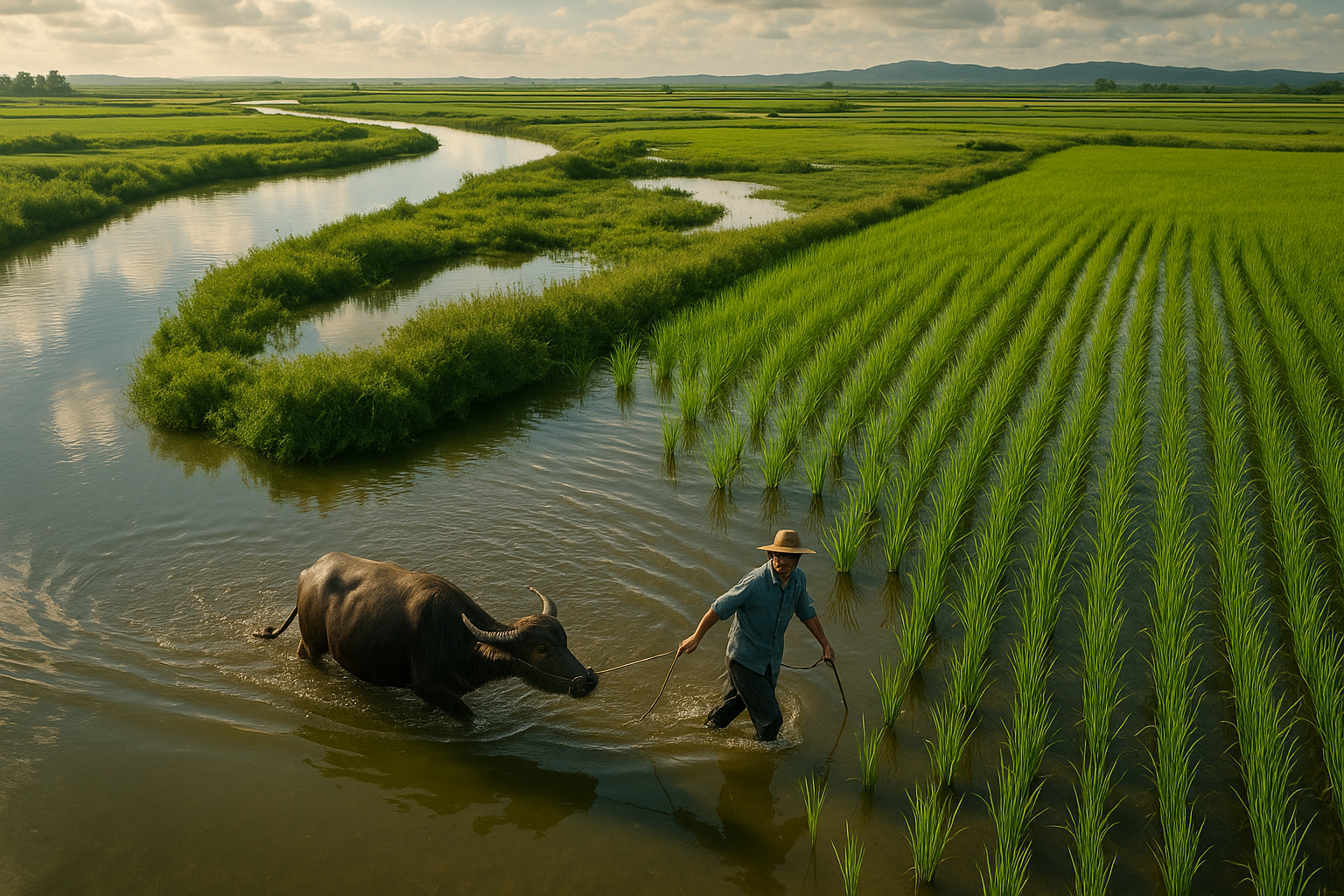Balancing Food, Water, and Ecology: Sustainable Farming in China’s Sanjiang Plain
The study by the Chinese Academy of Sciences and partners models how optimizing irrigation and crop patterns in China’s Sanjiang Plain can cut water use, boost carbon storage, and restore ecosystems with minimal economic loss. It shows that sustainable food production and ecological protection can successfully coexist through intelligent water–land coordination.

In a landmark study published in Agricultural Water Management (2025), researchers from the Chinese Academy of Sciences, the University of the Chinese Academy of Sciences, and Heilongjiang Bayi Agricultural University have developed a data-driven roadmap to balance food production, water conservation, and ecological sustainability in China's vital Sanjiang Plain. Led by Hao Song and Peng Qi, the study addresses how to coordinate water and land resources in one of the nation's most productive yet environmentally fragile grain-growing areas. As China races to meet its "dual carbon" targets, peaking emissions before 2030 and achieving neutrality before 2060, the Sanjiang Plain exemplifies the tension between food security and ecosystem preservation. Expanding rice fields have driven wetland loss and groundwater decline, threatening long-term sustainability. The researchers sought to identify how smarter management of water and land could simultaneously enhance food supply, carbon storage, and ecological health.
Modelling the Water–Carbon–Food–Ecology Nexus
The team built a Water–Carbon–Food–Ecology (WCFE) model integrating hydrology, optimization, and spatial analysis. They used the Community Water Model (CWatM) to simulate two decades of hydrological data (2000–2019), combined with a multi-objective optimization model based on the NSGA-III genetic algorithm. The GridLandOpt module then mapped optimal land use across twelve hydrological sub-basins, while the entropy-weighted TOPSIS method ranked the best balance between water saving, carbon gain, and economic benefit. Two scenarios were tested: one under conventional irrigation and another employing water-saving irrigation through efficient systems like drip and sprinkler methods. This multi-layered approach allowed the researchers to visualize how shifts in cropping patterns and irrigation could reshape the ecological and economic landscape of the plain.
Major Water Savings, Modest Economic Trade-offs
The results were both practical and promising. Under conventional irrigation optimization, irrigation water use dropped by 2.3 billion cubic meters, and under water-saving irrigation, the reduction doubled to 4.5 billion cubic meters. Despite these sharp reductions, grain output remained stable while carbon sequestration rose by 12.5% and 11.2% respectively. The optimized crop ratio changed from a dominant 3:2:1 (rice:maize:soybean) to around 2.3:2.4:1.3, easing the pressure on water while maintaining productivity. Wetlands expanded by more than 2%, strengthening biodiversity and hydrological balance. Although the total economic value of crops declined slightly, by about 3%, or roughly 3.5 billion yuan, the ecological benefits and reduced resource strain more than compensated for the loss. The study framed this as a "rational trade-off," showing that sustainable agriculture does not require sacrificing national food security.
From Rice Dominance to Carbon Efficiency
One of the study's most striking findings was the shift in the region's carbon dynamics. Before optimization, rice cultivation produced over 90% of agricultural greenhouse gas emissions, primarily methane from flooded paddy fields. After optimization, maize replaced rice as the dominant crop in several sub-basins, especially those with water scarcity, cutting emissions and boosting carbon absorption. In some regions, carbon storage increased by more than 50%. The authors noted that forests and wetlands contributed over two-thirds of the total ecological value, with wetlands alone adding up to 10.2 billion yuan in ecosystem services under conventional irrigation and 2.7 billion yuan under water-saving conditions. The maps and charts in the paper (notably pages six to ten) illustrate this transformation vividly, with rice fields receding from upland areas and ecological connectivity strengthening across the basin.
A Model for Sustainable Agricultural Futures
Climatic variability remained a defining factor in the Sanjiang Plain. Between 2000 and 2019, rainfall fluctuated from 438 to 930 millimeters, with total water resources ranging from 15.7 to 47.9 billion cubic meters. The study warned that future warming could intensify these extremes, making efficient irrigation and adaptive cropping even more crucial. To secure long-term resilience, the authors urged policymakers to modernize irrigation infrastructure, reform agricultural subsidies to encourage maize and soybean cultivation, and expand wetland restoration. They also recommended farmer training programs to enhance the adoption of water-efficient technologies.
The study's broader implication is clear: integrating hydrological, agricultural, and ecological models can help policymakers craft balanced, evidence-based strategies. By aligning food production with environmental restoration, China can move closer to its vision of an "ecological civilization", a system where prosperity and sustainability advance together.
The Road Ahead
The Sanjiang Plain study demonstrates that resource efficiency, carbon reduction, and ecological recovery can coexist within a single management framework. It proves that reducing water use does not mean reducing productivity, provided that land and water are coordinated intelligently. With its blend of advanced modeling and pragmatic insight, the research offers a template for other agricultural regions facing similar pressures worldwide. As the authors conclude, intelligent optimization of irrigation and cropping structures can turn China's agricultural heartlands into global models of sustainable development, feeding both people and the planet with equal care.
- FIRST PUBLISHED IN:
- Devdiscourse
ALSO READ
-
Uttar Jal Sanchay Yatra: North Tripura's Revolutionary Water Conservation Initiative
-
Reviving River Suvarnamukhi: A Blueprint for Water Conservation
-
Art of Living Leads Water Conservation Surge in Assam
-
'Neeriddre Nale': Karnataka's Push for Water Conservation
-
'Neeriddre Nale': A Revolutionary Initiative for Water Conservation in Karnataka









